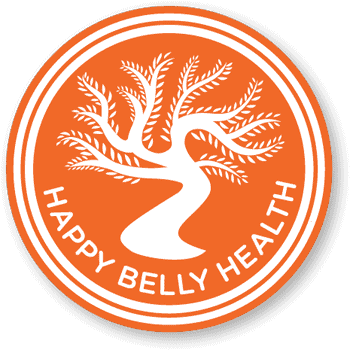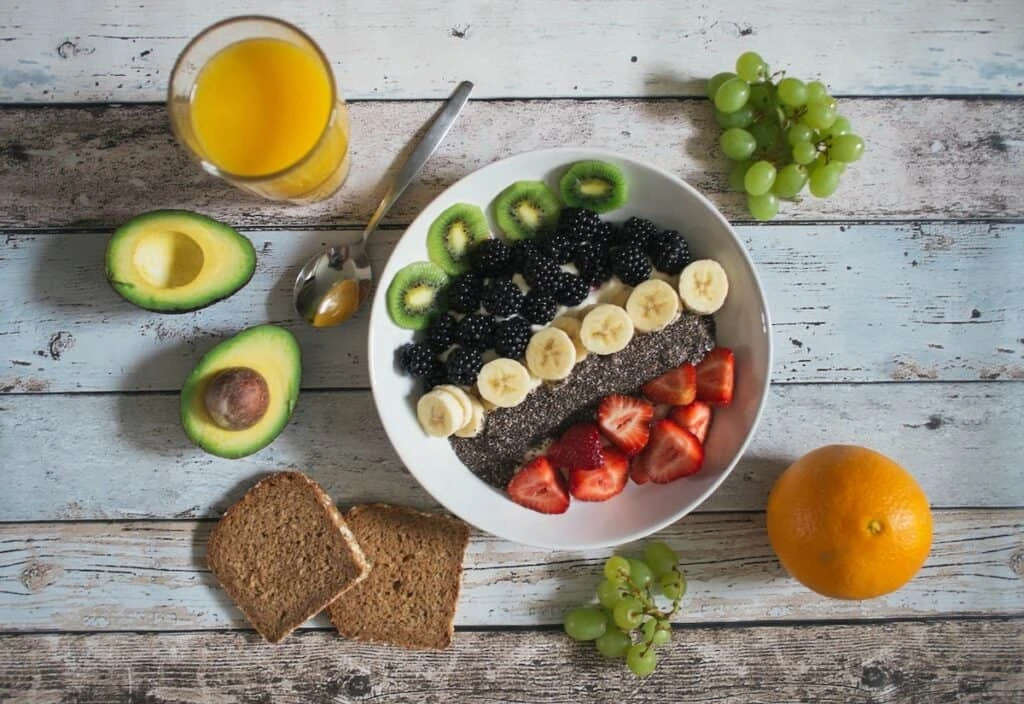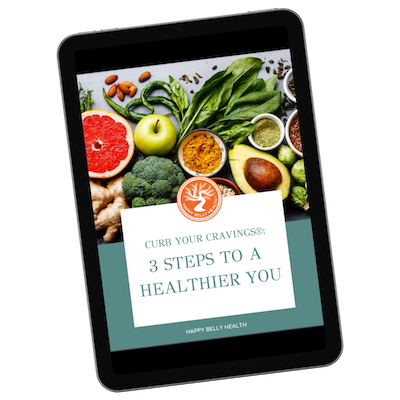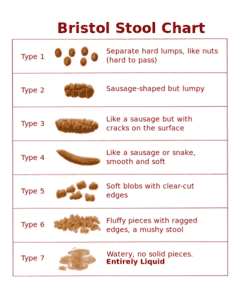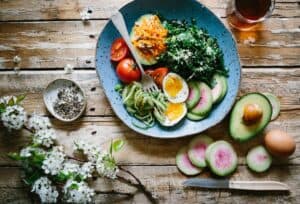Welcome to our Curing Constipation series.
There are many health benefits of fiber and eating fiber-rich foods. Fiber is a non-starchy carbohydrate found predominantly in plant foods, though it can also be found in some shellfish exoskeletons or synthetically derived. Humans lack the enzymes to digest fiber. Instead, fiber passes through the entirety of the digestive tract fully intact, serving other purposes in our body.
Also Read Improving Digestion
Benefits of Fiber
A main role of fiber is to feed the microbiome, which will shift depending on fiber adequacy. When fiber is adequate, the microbiome will proliferate with beneficial strains. However, when fiber is insufficient, the microbes will begin feasting on the mucosal layer instead, causing wear-and-tear on the gut lining and subsequent downstream dysfunction.
Increased fiber intake has been associated with numerous benefits, including:
- Decreased inflammation
- Lower risk of various cancers
- Regulated bowel motility
- Slowed movement through the small intestine (resulting in increased nutrient absorption, though this also means more food for any unwanted microbes)
- Increased satiety and lower caloric intake
- Slower glucose release due to delayed gastric emptying
- Decreased serum cholesterol
- Balanced microbiome flora
- Improved immune response by decreasing mucosal membrane inflammation
- Improved clearance of exogenous toxins from the gastrointestinal tract
Consuming Fiber: Recommendations and Considerations
Fiber Intake Recommendations
USDA Recommendations:
- Women: At least 28 g per day
- Men: At least 38 g per day
- Children (ages 4-8): 25 g per day
- Women: At least 28 g per day
Optimal Intake: Aiming for 35 to 50 g per day for adults is considered more optimal for overall health.
Typical Fiber Consumption
- Western Diet: Typically provides about 5 to 15 g of fiber per day.
- Children: Often consume less than 5 g per day.
- Traditional Diets: Some cultures consuming traditional foods may eat over 40 g per day.
Increasing Fiber Intake
- Gradual Addition: Increase fiber gradually to avoid symptoms like constipation, gas, cramping, and bloating. This allows your digestive system to adjust and helps beneficial microbes thrive.
- Water Consumption: Increase water intake to at least 64 fluid ounces per day, and more if needed, to aid in fiber digestion and prevent discomfort.
Special Considerations
- Small Intestinal Overgrowths: For conditions like Small Intestinal Bacterial Overgrowth (SIBO), adding dietary fiber might be contraindicated. It’s best to consult with a healthcare provider for personalized advice.
- Supplemental Fiber: While dietary fiber from whole fruits, vegetables, whole grains, and legumes is preferred, some individuals may need supplemental fiber. However, be cautious as some supplemental fibers can cause gastrointestinal symptoms.
Types of Fiber
Naturally Occurring Fibers:
- Gums
- Beta-Glucans
- Inulin and Oligofructose
- Lignans
- Cellulose and Hemicellulose
- Pectins
Functional Fibers (Extracted or Synthetic):
- Psyllium Husks
- Chitin and Chitosan
- Fructooligosaccharides
- Galactooligosaccharides
- Polydextrose and Polyols
- Resistant Dextrins/Maltodextrin
- Polyglycoplex (PGX)
Note: Some functional fibers overlap with FODMAP categories, which can affect individuals with sensitive digestive systems.
Types of fiber
All plant-based foods contain a mixture of soluble and insoluble fiber. Soluble fiber dissolves in water; insoluble does not.
Soluble fiber can be further categorized as viscous (gel forming in water) or non-viscous, and fermentable or non-fermentable.
- Soluble, viscous, fermentable fibers feed gut microbes that produce short chain fatty acids (SCFAs) and peptides for neurotransmitters and gut-derived hormones while promoting a thicker mucosal layer. This fiber category is what is responsible for decreasing postprandial blood sugar spikes and serum cholesterol.
- Soluble, viscous, fermentable fibers feed gut microbes that produce short chain fatty acids (SCFAs) and peptides for neurotransmitters and gut-derived hormones while promoting a thicker mucosal layer. This fiber category is what is responsible for decreasing postprandial blood sugar spikes and serum cholesterol.
- Soluble, viscous, unfermentable fibers are not digested by gut bacteria, but still help regulate blood sugar and serum cholesterol levels.
- Soluble, viscous, unfermentable fibers are not digested by gut bacteria, but still help regulate blood sugar and serum cholesterol levels.
- Soluble, nonviscous, fermentable fibers are what most feed the gut microbiome.
Foods containing significant amounts of viscous and nonviscous soluble fiber include beans and legumes, fruits, vegetables, nuts and seeds, and oats and other cereal grains. Of these soluble fiber foods, some of the highest sources are lentils and beans, winter squash, artichoke hearts, prunes, mushrooms, and konjac root (Miracle Noodles).
Insoluble, unfermentable fibers in a larger, less processed form (think large pieces of bran) act as laxatives, irritating the gut lining to increase water and mucus release, which bulk up the stool and help it to pass.
When finely ground, insoluble fiber can cause further constipation by being less irritating and drawing in less water, and in some cases can even be too drying. Foods containing high amounts of insoluble fiber include whole grains, brown rice, wheat and rice bran, barley, cabbage, and celery.
Prebiotics and Resistant Starches
Prebiotics
Prebiotics are specific types of soluble and insoluble fibers that nourish beneficial gut microbes. They act like fertilizer for the microbiome, helping these microbes to thrive and maintain a healthy balance in the gut.
Benefits of Prebiotics:
- Decrease Inflammation: Help reduce inflammation in the body.
- Regulate Glucose Levels: Support better glucose regulation.
- Decrease Allergies and Eczema: May help reduce allergic reactions and eczema.
- Nourish Enterocytes: Support the health of intestinal cells through short-chain fatty acid (SCFA) production.
- Support Detoxification: Promote bowel movements and assist in removing carcinogenic substances and metals from the gut.
Prebiotic Foods Include:
- Leeks
- Onions
- Garlic
- Jerusalem Artichokes
- Asparagus
- Green Bananas and Plantains
- Lentils
- Beans
- Potatoes (especially raw potato starch)
- Dandelion Greens
- Apples (with peel)
- Jicama
- Chicory
Resistant Starches
Resistant starches are a type of prebiotic that combines carbohydrates with fiber. They resist digestion in the small intestine and reach the colon, where they are fermented by beneficial bacteria.
Foods High in Resistant Starch Include:
- Green Bananas and Plantains (and their flours)
- Beans
- Peas
- Lentils
- Rice (cooked and then cooled before eating, okay to reheat)
- Potatoes (cooked and then cooled, okay to reheat)
- Raw Potato Starch
- Whole Grains (including those containing gluten)
References:
Linus A Pauling Institute, Fiber, 2021. https://lpi.oregonstate.edu/mic/other-nutrients/fiber
Lyon, M., Dietary Fiber. In Pizzorno & Murray, Textbook of Natural Medicine. Churchill Living: USA, 2014. Katherine Harmon Courage, Scientific American, 2015. Fiber-Famished Gut Microbes Linked to Poor Health.
https://www.scientificamerican.com/article/fiber-famished-gut-microbes-linked-to-poor-health1
Some examples of foods to feed your microbiome:
| Soluble Fiber lentils and beans (black, garbanzo, lima, navy, kidney, etc.)oatmeal*winter squashartichoke heartsBrussels sprouts and broccoliturnipsprunesoranges*mushroomssweet potatoes*avocado*dried figsapricots with skinonionskonjac root (Miracle Noodles)chia* and flaxseeds* (freshly ground) | Prebiotics leeks, onions, and garlicjerusalem artichokesasparagusgreener bananas* and plantainslentils, beans, potatoes, and raw potato starchdandelion greens*apples with peeljicamachicory |
| Insoluble Fiber bamboo shoots*whole grains (brown rice*, wheat and rice bran*, barley)nuts (almonds*, pistachios, peanuts*)amaranth*cauliflowercabbage*green peasleafy greens*apples with peelceleryblackberries, raspberries*root vegetables (carrots*, parsnips, potatoes with peel) | Resistant Starch greener bananas* and plantains*, their floursbeanswhole grains (oats*, pearl barley, rye)peas, lentils, beans, rice, and potatoes that have been cooked and then cooled before eating (ok to reheat)raw potato starch |
*low FODMAPs option when eaten in small quantities
